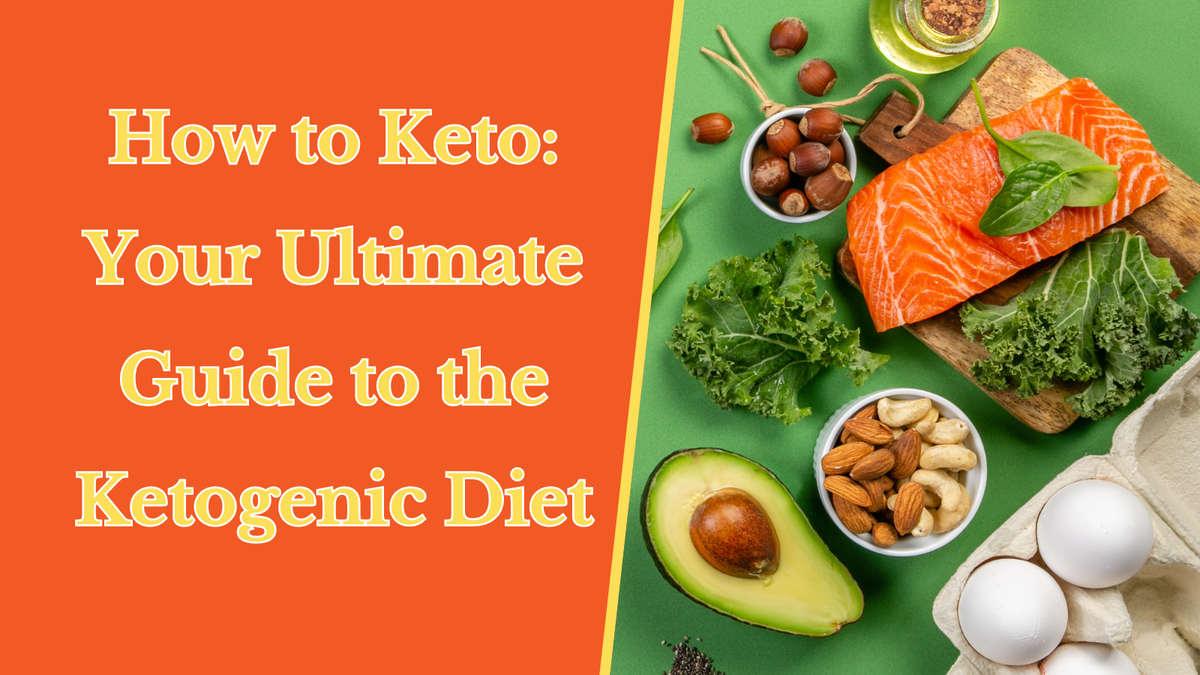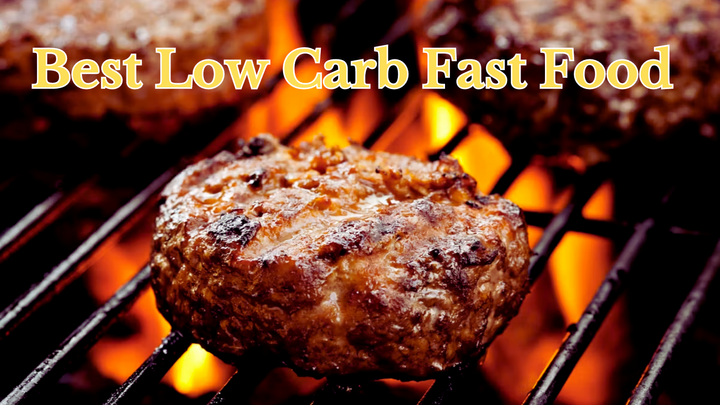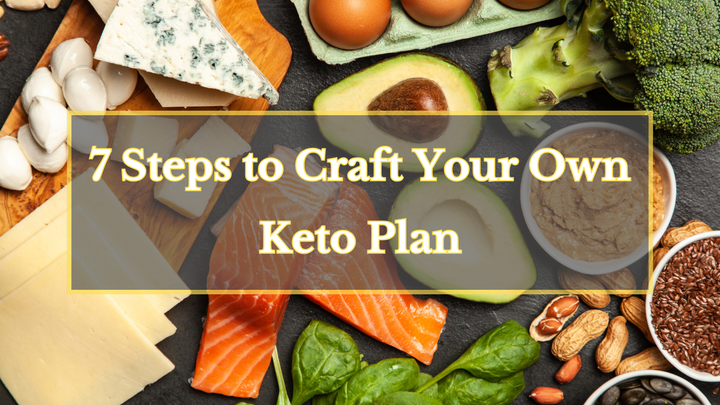How to Keto: Your Ultimate Guide to the Ketogenic Diet

Key Takeaways:
- Understanding the basics of ketogenic diets and how they facilitate weight loss through fat burning.
- Key dietary adjustments and food choices necessary for maintaining a successful keto lifestyle.
- Strategies to overcome common challenges such as keto flu and maintaining long-term adherence to the diet.

Embarking on a ketogenic diet, commonly known as "keto," involves significantly reducing carbohydrate intake and replacing it with fat.
This shift pushes your body into a metabolic state called ketosis, where fat becomes the primary fuel source, aiding in weight loss and potentially providing other health benefits.
What is a Ketogenic Diet?
A ketogenic diet is a high fat, moderate protein, and low carbohydrate eating plan.
By drastically reducing carb intake—typically to less than 50 grams per day—your body switches from using carbohydrates as its main energy source to burning fat, a process during which ketone bodies are produced in the liver.
The Science Behind Ketosis
When you follow a low carb diet like keto, your body enters a state known as ketosis.
During ketosis, the body becomes incredibly efficient at burning fat for energy.
This not only helps substantially in reducing body fat but also can lead to a decrease in blood glucose levels and an increase in ketone production.
Planning Your Keto Meals

Creating a meal plan is crucial for anyone starting a ketogenic diet.
High-fat foods such as avocado oil, coconut oil, and extra virgin olive oil should become staples in your kitchen.
Additionally, moderate amounts of protein from sources like eggs and lean meats are essential to help maintain muscle mass.
Understanding Fat Intake
On a keto diet, fat constitutes the majority of your daily calories.
It's important to focus on healthy fats, which can include saturated fats and certain fatty acids.
Foods rich in these beneficial fats include fatty fish, nuts, and seeds, all of which support ketone production and help maintain energy levels.
Protein: How Much is Too Much?
While moderate protein is a pillar of the ketogenic diet, too much protein can prevent ketosis, as the body can convert excess protein into glucose in a process called gluconeogenesis.
Monitoring your protein intake is key to ensuring that your body remains in a state of ketosis.
Dealing with Keto Flu
As your body adapts to a ketogenic lifestyle, you might experience symptoms known as the "keto flu." These can include headache, fatigue, and irritability.
These symptoms are temporary, and staying hydrated and maintaining electrolyte balance can help mitigate them.
Long-Term Sustainability
Adhering to a keto diet long term requires careful planning and consideration of nutritional balance.
Consulting with a registered dietitian can provide guidance tailored to your individual health needs and help prevent potential nutrient deficiencies.
Keto Diet and Exercise: A Balancing Act

When embarking on a ketogenic diet, integrating exercise can seem like walking a tightrope.
The low carb high fat nature of the diet significantly alters how your body fuels itself, prioritizing fat over carbohydrates.
This shift can enhance your energy levels, making it easier to engage in physical activities.
However, during the initial stages, as your body adjusts to burning fat, you might experience a dip in your usual stamina.
This is a temporary phase, and with consistent effort, most find that their capacity for exercise returns and often improves.
Exercise is not just feasible but beneficial on a ketogenic diet.
It accelerates the process of reaching ketosis by depleting glycogen stores more quickly.
For those following a ketogenic diet, focusing on low-intensity activities like walking or yoga during the initial adjustment period can be particularly effective.
As your body becomes adept at burning fat, higher intensity exercises can be reintroduced.
The key is to listen to your body and adjust your workout intensity and duration to align with your energy levels, ensuring you maintain ketosis while staying active.
Navigating Keto in Social Settings
When embarking on a ketogenic diet, social gatherings can seem like a minefield of temptation.
From birthday cakes to pasta-laden dinner parties, the array of high-carb offerings can challenge even the most dedicated.
However, with a bit of planning and savvy, you can stick to your low carb diet without feeling isolated.
Start by eating a small, keto-friendly meal before heading out, so you're not tempted by hunger.
Offer to bring a dish to share, like a rich, creamy spinach dip that fits within your diet plan, ensuring there's something you can enjoy guilt-free.
Moreover, communication is your best ally. Don't shy away from explaining your dietary restrictions to hosts or friends.
Most people are accommodating once they understand your health goals.
For drinks, steer clear of sugary cocktails and opt for spirits with zero-carb mixers like soda water, squeezing in some lime for that extra zing.
By turning these social hurdles into opportunities for creativity and conversation, you maintain your nutritional ketosis without skipping the fun.
Keto Diet and Aging

The ketogenic diet may offer more than just weight loss benefits; it could also be a key player in the aging process.
Check Out My Article on Keto For Women Over 40!
Research suggests that a high fat diet, particularly one rich in healthy fats like omega-3 fatty acids from fish and monounsaturated fats from avocados, can help reduce inflammation—a major contributor to aging.
Additionally, the reduction in high blood sugar levels through minimal carbohydrate intake may lower the risk of age-related diseases such as type 2 diabetes and Alzheimer's.
On the flip side, it's crucial to approach this high fat diet with a balanced perspective, especially for seniors.
Ensuring adequate nutrient intake is essential, as older adults need sufficient dietary fat and protein to maintain muscle mass and bone health.
Incorporating a variety of fatty foods, like nuts, seeds, and olive oil, along with adequate hydration and regular physical activity, can make the ketogenic diet a viable option for aging gracefully, keeping both the mind and body in peak condition.
The Role of Fiber in a Ketogenic Diet
Fiber plays a crucial yet often overlooked role in a ketogenic diet.
While it's true that keto emphasizes low carbohydrate intake, not all carbs are enemies.
Fiber, a form of carbohydrate that the body doesn't digest, is essential for maintaining healthy digestion and can aid in preventing the constipation often associated with less varied keto eating habits.
Including high-fiber, low-net carb foods like green veggies and certain seeds can help you meet your fiber needs without compromising your carb count.
Moreover, fiber has a role in maintaining blood sugar levels and aiding in satiety, which can be particularly beneficial in a restrictive diet like keto where managing hunger is key.
Foods rich in fiber such as avocados, flax seeds, and broccoli not only keep you fuller longer but also support a healthy gut microbiome, crucial for overall health.
Integrating a variety of fiber-rich, keto-friendly foods can enhance the nutritional balance of your diet, making your keto journey both more enjoyable and sustainable.
Keto and Chronic Disease
Research suggests that ketogenic diets may offer benefits beyond weight loss, such as reducing risks associated with chronic diseases like type 2 diabetes and heart disease.
However, more long-term studies are needed to fully understand the health impacts.
Keto Diet Variations

There are several variations of the ketogenic diet, including the standard ketogenic diet (SKD), cyclical ketogenic diet (CKD), and targeted ketogenic diet (TKD).
Each type serves different purposes, from weight loss to enhancing athletic performance.
Eating Out on Keto
Navigating restaurants while on a keto diet can be challenging but manageable.
Opt for dishes rich in proteins and fats, and avoid foods with hidden sugars and carbs, such as dressings and sauces.
Keto-Friendly Snacks
Snacking on keto involves choosing low carb options that align with your macronutrient goals.
Cheese, nuts, and seeds are excellent snacks that help keep hunger at bay without breaking your carb limit.
Supplements for Keto
Certain supplements can aid the transition to ketosis and reduce symptoms of the keto flu.
Electrolytes, MCT oil, and omega-3 fatty acids are popular choices among keto dieters.
Common Mistakes to Avoid
Many beginners make the mistake of eating too much protein or neglecting vegetable intake, leading to nutrient deficiencies.
Keeping a balanced diet within the keto framework is crucial for success.
Check out this article: 6 Common Mistakes to Avoid on the Keto Diet
Preparing for Keto Success

Before diving into keto, setting clear, achievable goals and preparing your kitchen and meal plans can pave the way for a smoother transition and greater adherence to the diet.
The Psychological Aspect of Keto
Mental and emotional preparation is just as important as the physical aspect of dieting.
Being prepared for changes in your body and having a support system can help you stay committed to your keto journey.
Summary
The ketogenic diet is a powerful tool for weight loss and health improvement, focusing on high fat intake, moderate protein, and low carb consumption.
By understanding the principles of ketosis, preparing appropriate meal plans, and addressing common challenges, you can effectively harness the benefits of this diet to achieve your health and wellness goals.
FAQs
How quickly can I expect to lose weight on a ketogenic diet?
Weight loss can vary, but many people see initial results within the first week due to loss of water weight. Afterward, consistent fat loss will depend on caloric intake and adherence to the diet.
Check out my article,"How Much Weight Can I Lose In A Month On Keto."

Can I ever eat carbs again on a ketogenic diet?
While the ketogenic diet is low in carbs, you can incorporate small amounts of carbohydrates, especially during the maintenance phase or through a cyclical ketogenic approach that includes carb refeeds.
Is the ketogenic diet safe for everyone?
While many people can safely follow a ketogenic diet, it's not suitable for everyone. Individuals with certain health conditions should consult healthcare professionals before starting a keto diet.


